Getting to Know Circuits
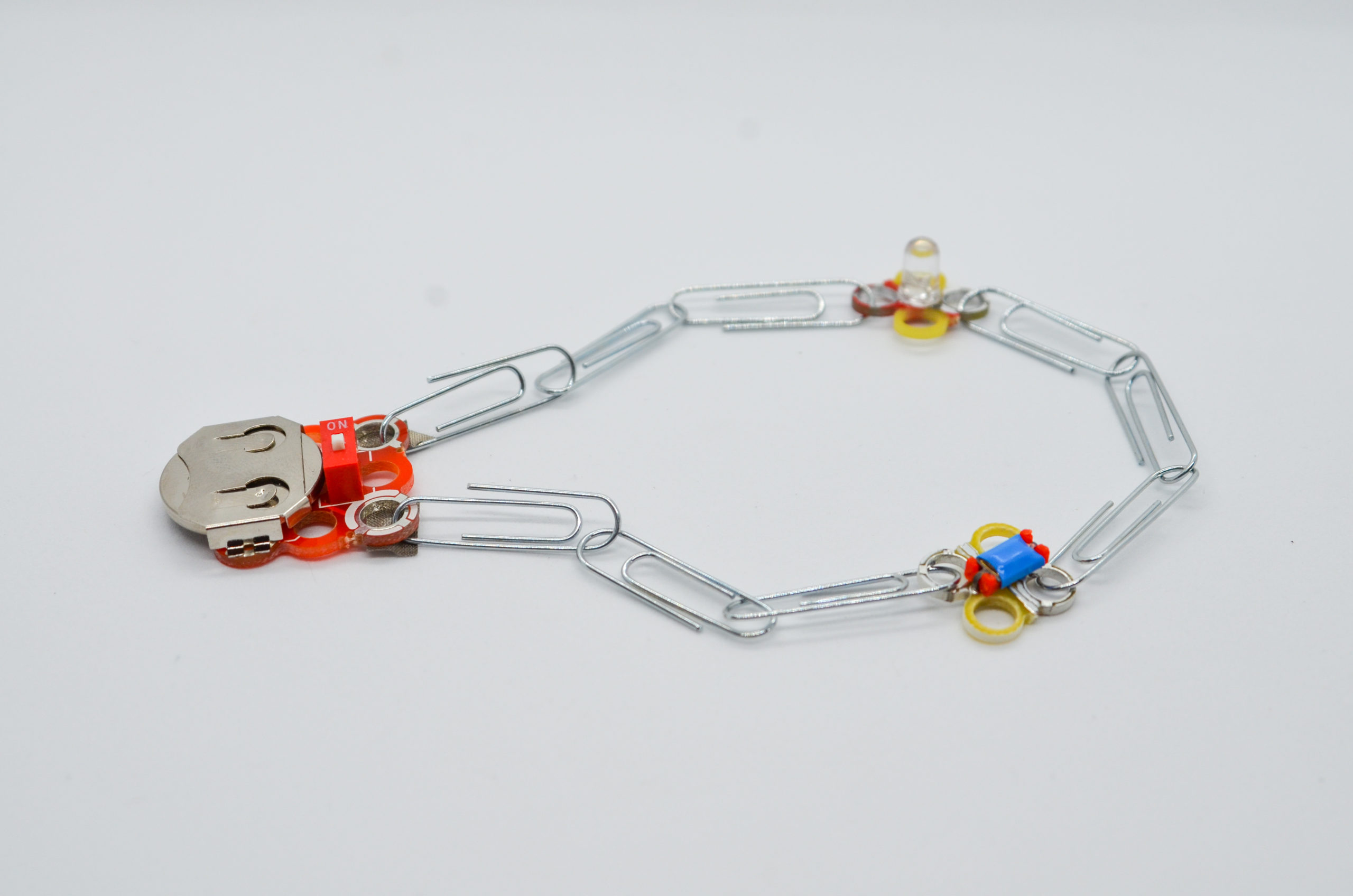
Getting to Know Circuits
60-90 min
Novice
Ages 8-13
What Will You Learn?
Let’s dive in to learn more about how circuits work! You’ll build a simple series circuit that lights up. Then you’ll make a conductivity tester and compare the electrical properties of different materials. Finally, you’ll learn about switches and add them to your circuit.
Overview:
In this lesson, campers will be introduced to the basics of how circuits work. They’ll learn some simple terminology associated with circuits and build a series circuit. Campers will compare the electrical properties of different materials. Finally, they will learn about switches and add them to their circuit.
Objectives:
-
Introduce campers to what circuits are and how they work.
-
Introduce the idea that a circuit must be closed for electricity to flow.
-
Introduce what a switch is and how it works.
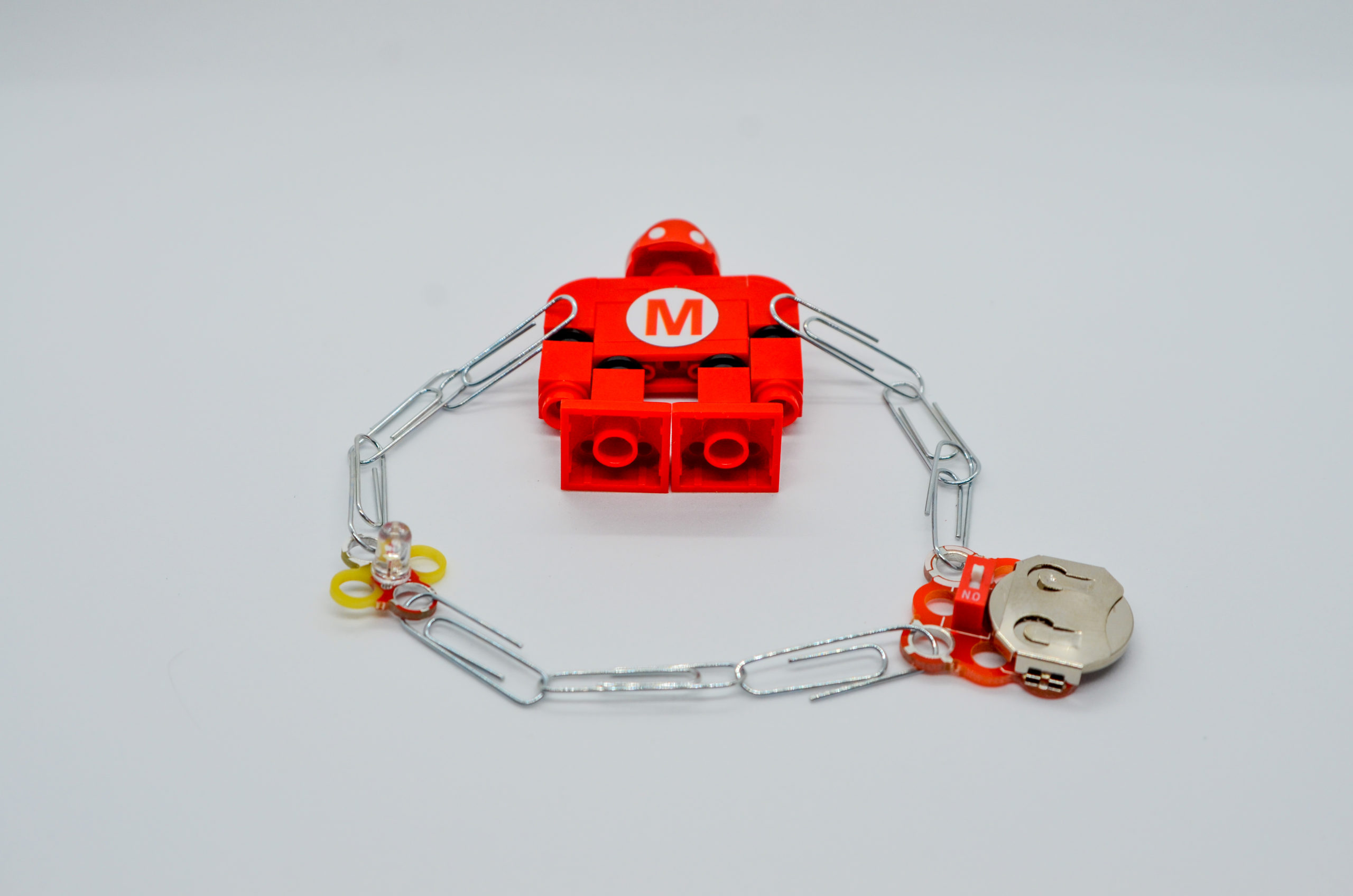
Electricity Scavenger Hunt
Electricity Scavenger hunt! Search your space for 3 minutes. Make a list (or take pictures) of as many things that use electricity as you can. Share your lists with a buddy. Who found the most electrical devices? Who found the most unusual item?

What Is a Circuit?
A circuit is a loop made up of different components — like your LED — that allows electricity to flow.
-
Circuits must have a power source, a load like your LED, and a conductive material that allows the electrical energy to flow.
-
Ask campers to try to identify the power source, load, and conductive material from one of the electrical items they identified earlier.
-
The loop must be closed for a circuit to work. Your LED will light up when electricity flows from the battery through the light and back to the battery.
-
The electricity in a circuit must flow in the right direction. Power flows from the negative (-) side of the battery (anode) to the positive (+) side of the battery (cathode). Some loads, like LEDs, must be connected in the right direction for them to work.
-
Want more information on circuits? Try this presentation.
Light up Your LED
Step 1
Gently pop the Battery Pack out of the Shake It Board. Place a battery into your battery pack with the smooth positive side facing up. Turn the switch to “on.”
Step 2
Link 2-3 paper clips together into a chain. Make three chains total.
Step 3
Hook one paper clip chain to the battery pack on the positive (red) side, taking care to touch the metal tinned area. If desired, use a bit of Maker Tape to strengthen the connection. Connect the other side of the paper clip chain to the positive (red) side of the LED.
Step 4
Repeat with another chain of paper clips, connecting the negative (white) side of the battery to the negative (white) side of the LED.
Step 5
Turn on the switch. Your LED should light up. Note: You may need to wiggle or pull on the paper clip chains a bit to get a good connection. You have just created a simple series circuit, a loop where the whole current flows through each component.
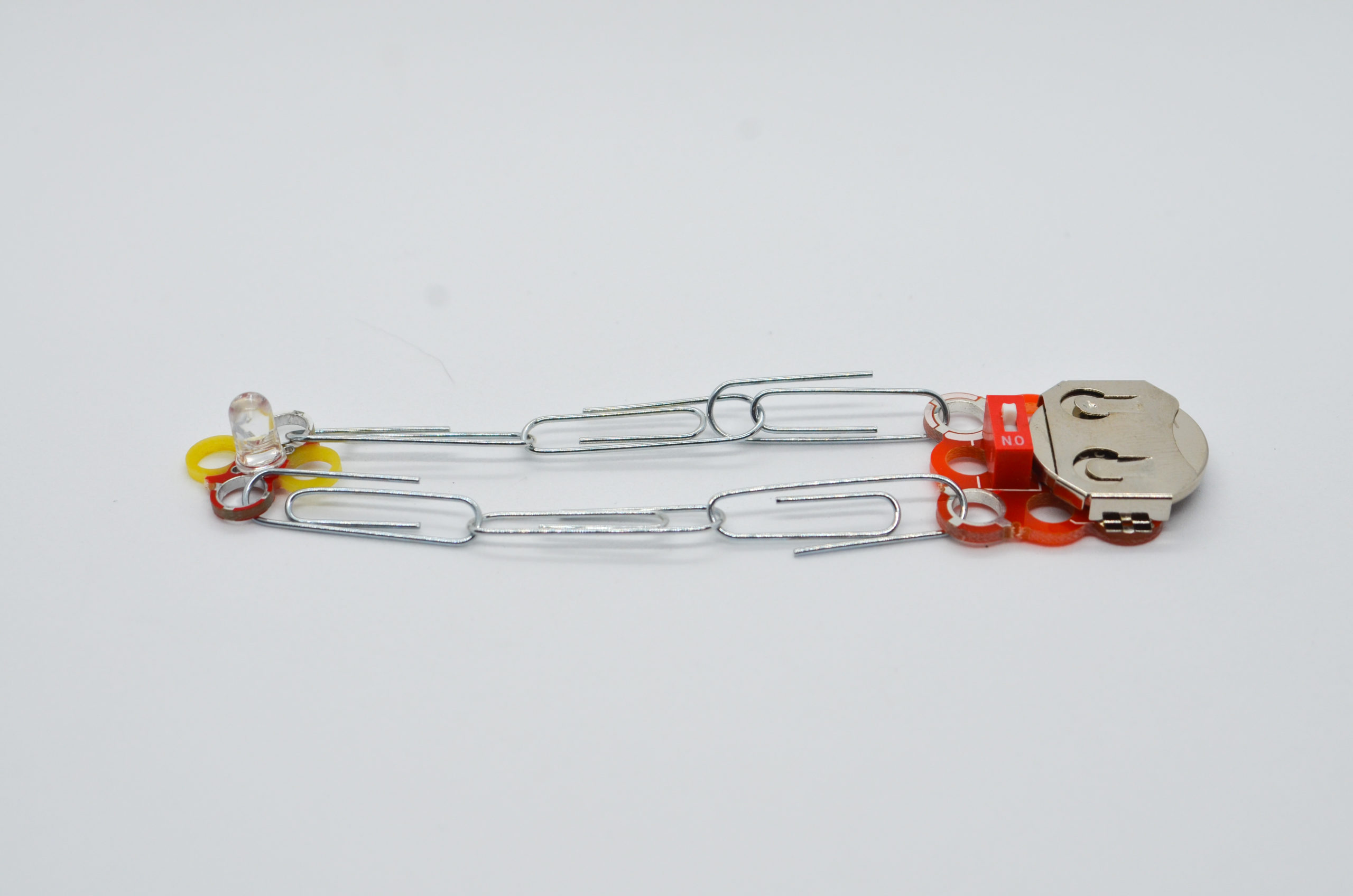
Test Properties of Different Materials
Step 6
Turn off the battery pack. Unhook the chain from the red (positive) side of the battery pack. Attach the third paper clip chain to the battery pack. Turn on the battery pack.
Step 7
To test items for conductivity, touch the unhooked chains to the item. If the LED lights up it conducts electricity. Test the maker tape, a pencil, a paper clip, an eraser, cardboard, a cup of water, yourself, etc.
Step 8
On the board (or elsewhere) make a list of things that conduct electricity and things that don’t. What do they have in common, if anything?
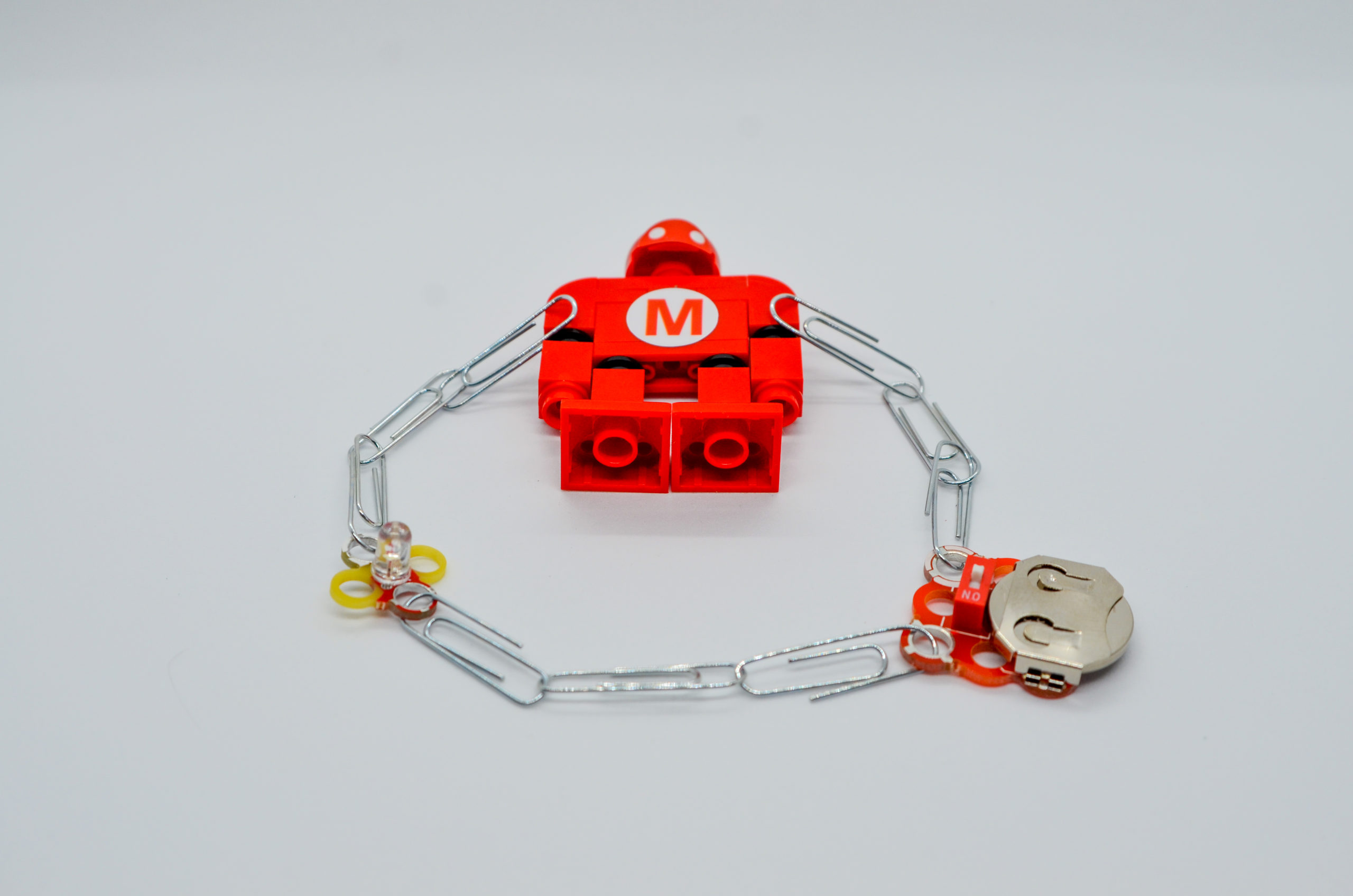
Add a Tilt Switch
Step 9
Turn off the battery pack. Place the tilt switch between the two unlinked paper clip chains, connecting to the white, tinned (shiny) openings. Turn on the battery pack.
Step 10
Move the tilt switch to turn the LED on and off. In what ways could a tilt switch be used in your inventions? What other things could you use as a switch?
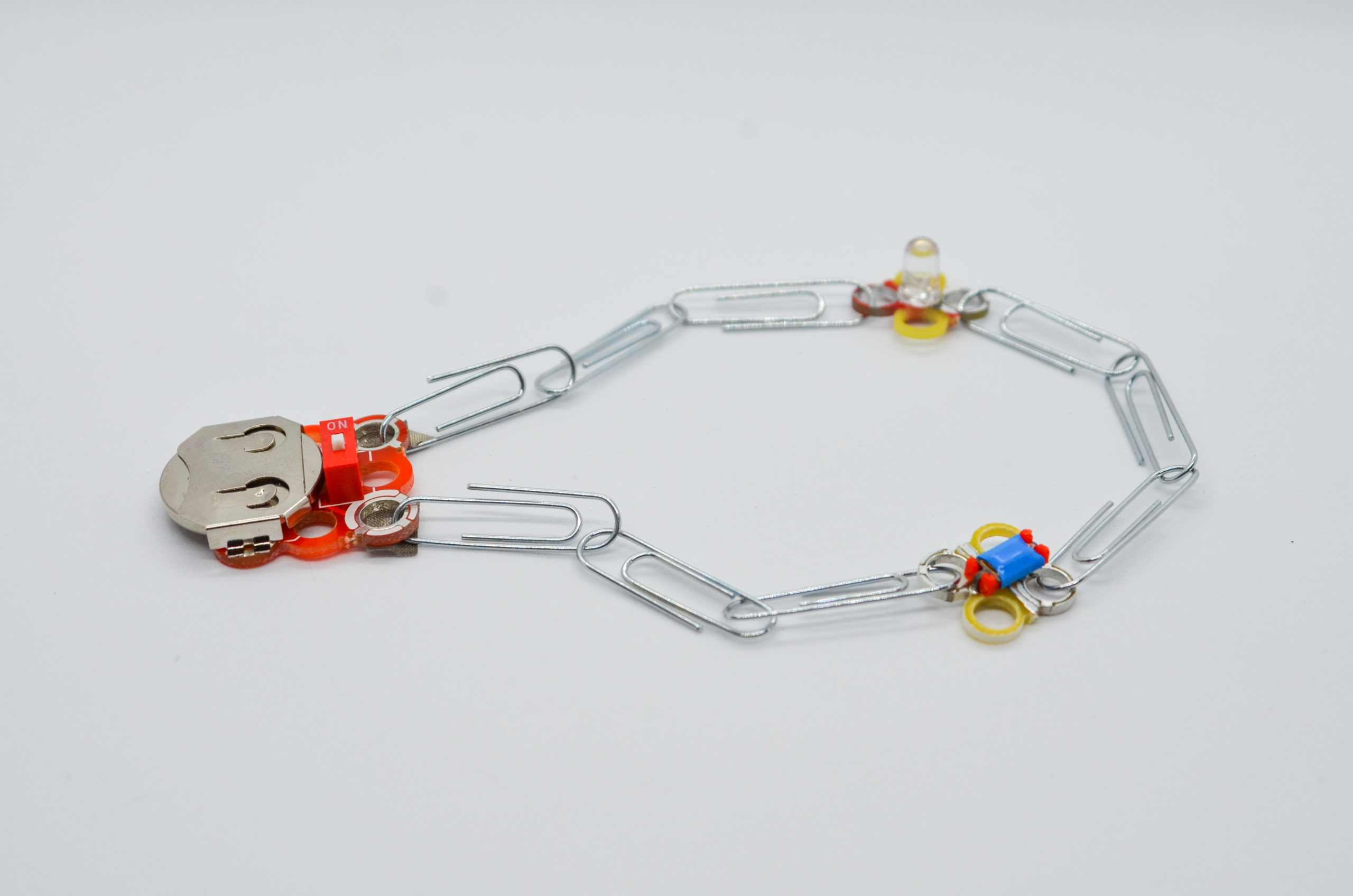
Build a Parallel Circuit (Optional)
Step 11
Have campers partner up. Ask them if they can add a second or third LED to the circuit. (If working virtually, have campers use traditional LEDs rather than chip LEDs.)
Step 12
If campers attempt to simply add another LED to the chain, they will quickly run out of power to light them all. This is the series circuit where all the load elements are connected in a single path. (See glossary for further information.)
Step 13
Build a parallel circuit instead. Use paper clips to make a circuit where each LED has its own loop back to the battery.
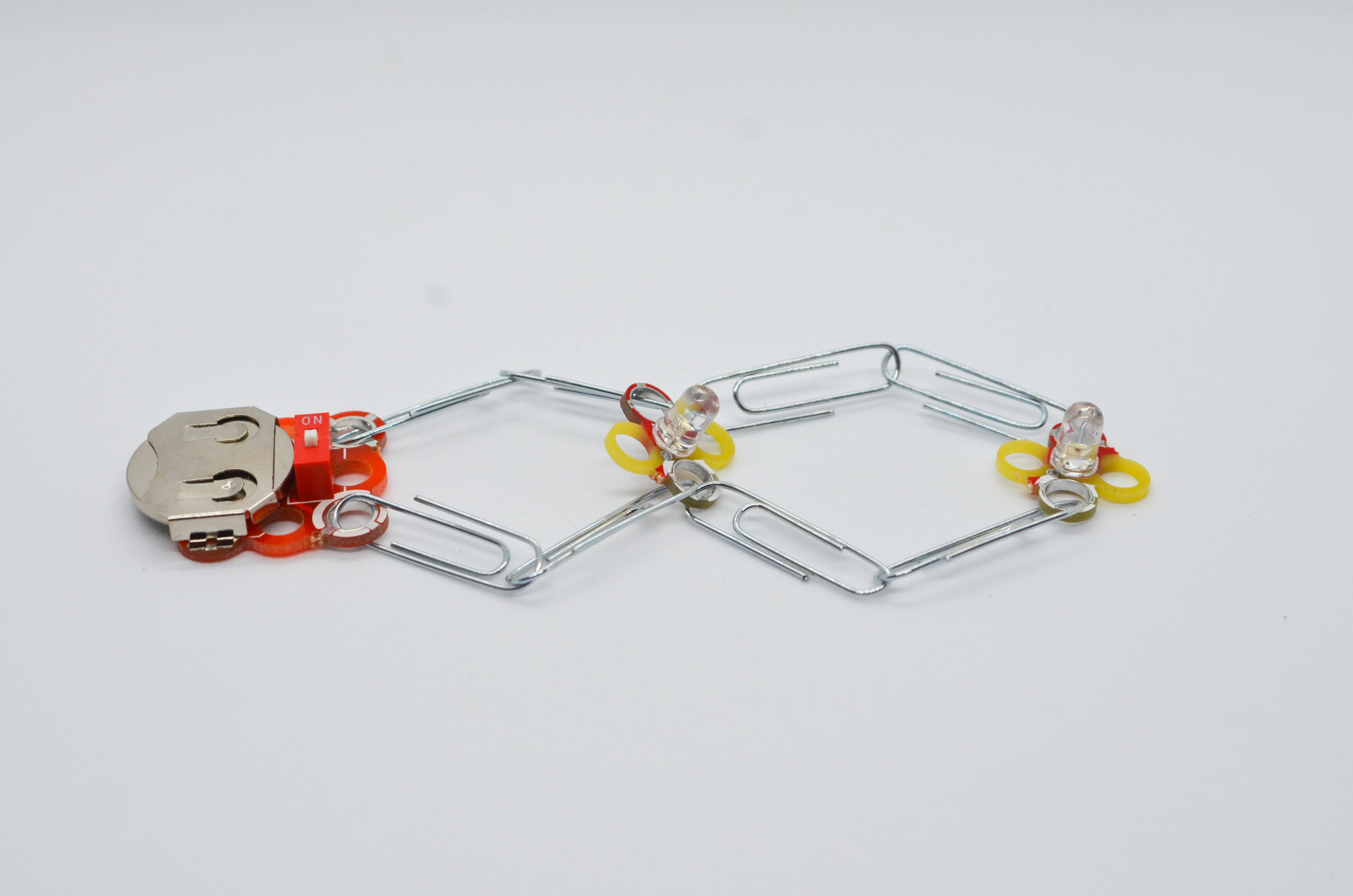
What's Next?
Bigger and Better Circuits
Complete one of these challenges:
Discovery Level – Work with friends to create the biggest or longest circuit you can. Share supplies as needed. Is there a limit to how many LEDs you can add? Is there a limit to how many alligator clips you can clip together? Why?
Exploration Level – Based on your experiments with conductivity, what else could you use to replace the paper clips? Test a circuit that uses different conductors.
Innovation Level – Design and test your own switch. Try using paper clips, brass brads, binder clips, aluminum foil, or other materials in your design. Want some ideas? Try “How to Use Switches.”
Note: Encourage campers to mount their creations by using tape on scrap cardboard as needed for structural support.
Take It Further
Tinkercad is a free online tool you can use to design circuits. They offer free tutorials and projects that are perfect for independent learning. Try it! Please note, campers will need to make a free account to use the website. Educators can also create class pages.
Circuit Reflections
Invite campers to share their creations.
What did you learn about how circuits work?
What traits did the conductors have? The insulators? How can you use this in your daily life?
Encourage students to share their creations with their families at home and try to teach them what they learned today.


